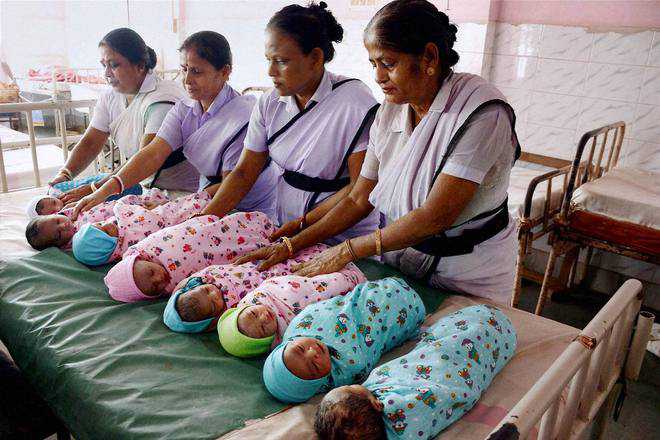Mission Parivar Vikas
THE Centre’s latest “out-of-the-box” idea to stabilise the population is a mix of the new and the mundane. The Ministry of Health has decided to hold saas-bahu sammelans in the country’s 146 districts where the total fertility rate (TFR) has remained stubborn. This idea, if effectively implemented, can play a role in reducing the TFR in the problem districts, mostly located in the cow belt of UP, Bihar, Rajasthan and Madhya Pradesh, besides isolated districts in tribal areas. Contrary to popular perception, women who live with their parents-in-law are likely to have more children than women who have to arrange child care support. The government has rightly honed in on the correlation between intensive grandparental child care and the fertility rate.
But the government in this case is following the beaten track of being more preoccupied with population reduction than the broader goals of improved public and reproductive health. This approach gives rise to misgivings, especially when the first BJP-led government in Assam is toying with the idea of a child control law. Population control missions are complex political processes and fertility rates have been used politically to stereotype perceptions about communities in the past.
The second leg of the “new plan” is “Nai Pehel” (fresh start) contraceptive kits. There is nothing in the kit that is not being disseminated as part of the broader health and maternal care policy. Much like the crores siphoned off from the policy of providing educational kits to North-Eastern states, this is a policy tailor-made for the bent contractor. Rather, the need is to tailor programmes so that they are more inclusive and sensitive to the apparent needs of the women concerned. Currently, there is no need to press the panic button. The country’s population has quadrupled since Independence but the growth rate has declined to 17.7 per cent from the high of 24 per cent between 1961 and 1981. Besides, the government needs to give equal attention to states such as Punjab where population growth is no longer a matter of concern. Here correcting the serious neglect of reproductive health care is a bigger concern.
Unlock Exclusive Insights with The Tribune Premium
Take your experience further with Premium access.
Thought-provoking Opinions, Expert Analysis, In-depth Insights and other Member Only Benefits
Already a Member? Sign In Now










